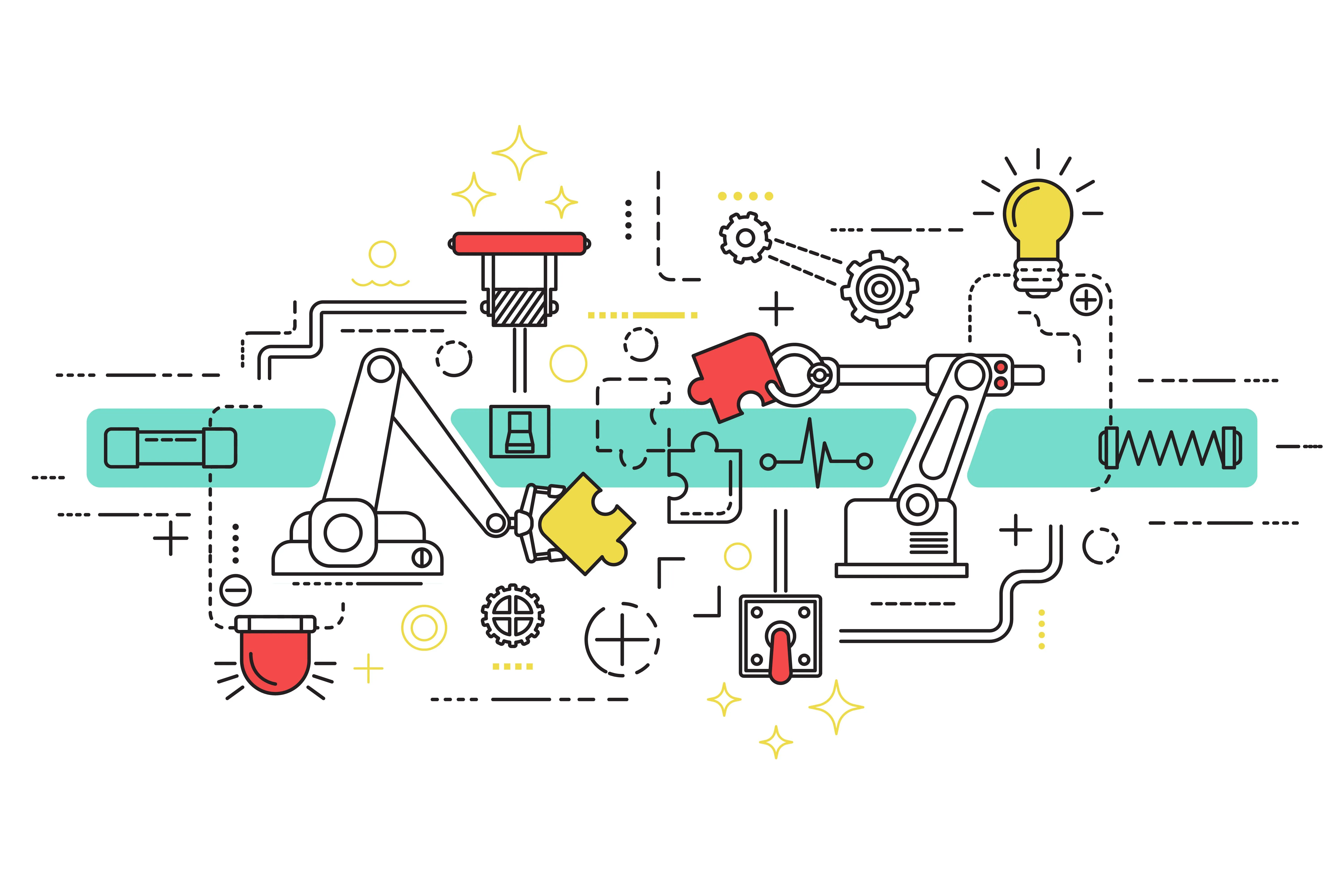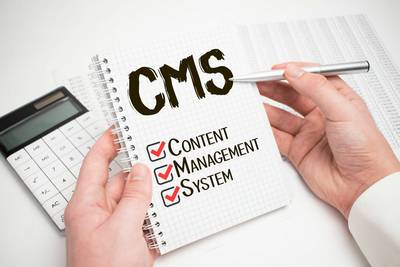Basics of content automation
Content automation may seem like a complicated term, but it simply refers to the use of technology to streamline the content creation process. Imagine you are a chef in a restaurant. Instead of chopping all your vegetables by hand, use a food processor to do the job. It's faster, more efficient and allows you to focus on more important aspects of your work, such as seasoning the dish and serving it beautifully.
Similarly, content automation is a digital food processor that takes care of repetitive tasks, giving you more time to focus on creating high-quality content. The real beauty of content automation is how it can improve your productivity. Imagine you run a small business. You're juggling a hundred different tasks - inventory management, customer relations, marketing products and services, and more. Among them, finding time to create engaging content for your website or social media platforms can be a challenge.
Content automation comes to the rescue here. It helps you automate some content-related tasks, freeing up time to focus on other key aspects of your business. You don't have to be a technology wizard to use it - all you need is a basic understanding of your business needs and how content automation can help meet those needs.
Why is content automation important?
Content automation has gone from a luxury to a necessity in today's rapidly changing digital world. Let's take a closer look at why this is so important for businesses.

Efficiency and time savings: Just like you don't want to spend hours chopping vegetables by hand when a food processor can do it in minutes, content automation can drastically reduce the time you spend on content-related tasks. Thanks to this, you can focus on other important aspects of your business, increasing the effectiveness of your activities.
Consistency and quality: Imagine trying to ensure that every dish at a restaurant tastes exactly the same every time. Without some standardization, this is almost impossible. Similarly, content automation maintains consistent tone, style and quality across all content elements, improving your brand image and credibility.
Personalization and better user experience: We all love when our coffee is prepared just the way we like it, right? Content automation allows for the same level of content personalization, adapting it to the tastes and needs of each user. This leads to a more engaging and satisfying user experience.
Scalability and Adaptability: Just as a chef can easily adapt a recipe to meet the needs of more people, content automation allows you to scale your content strategy and adapt it to your business growth and changing needs. This flexibility is crucial in today's ever-changing business landscape.
Data-driven decision making: Content automation isn't just about content creation; it also provides valuable data that can help with your future strategies. This data-driven approach allows you to make informed decisions, just as a chef changes a recipe based on customer feedback.
Competitive advantage: In a world where companies are competing for the attention of the same target audience, content automation can give you an edge. It's like having a secret ingredient that will make your dishes unique. With content automation, you can create high-quality, personalized content at scale, giving you a competitive advantage that's hard to beat.
To summarize, content automation is not just a buzzword, but a powerful tool that can transform your business. It's time to take advantage of this technology and reap the benefits it has to offer.
How to automate content creation?

Keyword research
Imagine you are cooking a delicious meal. The first step is choosing the right ingredients, right? Similarly, when creating content, your ingredients are the right keywords. Tools like SEMrush or Google Keyword Planner can help automate this process by providing a list of relevant keywords based on your business niche.
Content generation based on artificial intelligence
Now that you have your ingredients, it's time to cook. AI-powered content generators like Jarvis or Copy.ai can help you create engaging content based on keywords. Simply enter your desired topic and keywords and voila, you have a well-structured draft ready!
Content templates
Think of content templates like a cookbook. They provide a structured content format, ensuring consistency across all platforms. Tools like HubSpot's Blog Topic Generator can provide you with ready-to-use content templates.
Rotate and reuse content
Don't let your leftovers go to waste! Likewise, don't let your old content go unnoticed. Rotating and reusing content can give old content new life. Tools like Spinbot or Quillbot can help automate this process.
Content selection
Just as a chef prepares a menu, content selection involves collecting and presenting appropriate content that may interest the audience. Tools like Feedly and Pocket can automate this process, saving you hours of manual searching.
Automatic editing and correction
Even the best chefs taste their creations before serving. Automated editing and proofreading tools like Grammarly or Hemingway Editor ensure your content is error-free and easy to read.
Automation of visual content
A well-served dish is more appetizing, right? Similarly, visually appealing content attracts greater engagement. Tools like Canva or Adobe Spark can help you create stunning visuals for your content.
Content planning and distribution
Imagine having someone to serve your dishes at the right time. Content scheduling and distribution tools like Hootsuite or Buffer can ensure your content reaches your audience when they're most likely to engage.
Performance tracking and optimization
Finally, you need to know how well received your dish is. Performance tracking and optimization tools like Google Analytics or SEMrush can provide insight into how your content is performing and where you can improve it.
Content automation tools
As technology evolves, many content automation tools have emerged to simplify and streamline various aspects of content creation and management. Here I will introduce you to some of the most effective tools available for each aspect.

- Keyword Research: Tools like SEMrush and Google Keyword Planner are superstars in this arena. These tools provide insight into what your audience is looking for, helping you tailor your content to perfectly meet their needs.
- AI-powered content generation: Apps like Articoolo and Jarvis (formerly Conversion.ai) are making waves by using AI to generate high-quality content. These tools will help you create blog posts, social media updates, and more in minutes.
- Content templates and management: CoSchedule and HubSpot offer content management systems that include customizable templates for a variety of content types, from blog posts to email newsletters.
- Repurposing Content: Spinbot and Quillbot are great for repurposing existing content. They can rewrite your content to present it in a new light and increase its reach.
- Content Browsing: Tools like Feedly and Pocket allow you to curate relevant content from a variety of online sources, saving you time and ensuring a constant flow of fresh content.
- Automatic editing and proofreading: Hemingway Grammarly and App can help you refine your content by correcting grammar, improving readability, and suggesting better word choices.
- Visual content automation: Canva and Adobe Spark are fantastic tools for automating visual content creation. They offer graphic templates for social media, infographics, presentations, and more.
- Content scheduling and distribution: Buffer and Hootsuite allow you to schedule and distribute content across multiple platforms, ensuring that your content reaches your audience at the right time.
- Performance Tracking and Optimization: Google Analytics and SEMrush not only track the performance of your content, but also provide actionable insights to improve your content strategy.
Remember that the goal of content automation is not to replace human creativity, but to enhance it. These tools will help you create better content more efficiently. So you can experiment with them and find what works best for your business.
Best practices for implementing content automation
Implementing content automation may seem difficult, but it doesn't have to be. If you don't want to miss anything, follow the steps below carefully.

Define your goals and tasks
The first step is to clearly define the goal you want to achieve with content automation. Do you want to save time, improve efficiency or increase content production? Having clear goals and objectives will guide you in the automation process and provide a benchmark to measure success.
Identify areas of automation
Then identify areas in your content creation and management process that can be automated. This can be anything from content generation, editing, planning to distribution. Remember that the goal of automation is not to replace human creativity, but to enhance it by performing repetitive tasks.
Choose the right tools and technologies
There are countless content automation tools and technologies available, but not all of them will be suitable for your specific needs. Make sure you choose tools that align with your goals and objectives and are appropriate for the areas you have identified for automation.
Develop a content strategy
Now that you have your tools ready, it's time to develop your content strategy. This involves deciding what type of content you want to create, who you want to post it for, and how often you want to post it. Your strategy should also include SEO to ensure your content reaches your target audience.
Prioritize personalization and relevance
In the world of content automation, personalization and relevance are paramount. Make sure your automated content is tailored to your audience's interests and needs. This may mean segmenting your audience and creating personalized content for each segment.
Maintain quality control
Just because your content is automated doesn't mean you can forget about quality. Review and update your automated content regularly to ensure it remains high-quality and relevant. Remember that content automation is intended to improve content, not reduce it.
Monitor performance and optimize
Once you launch content automation, it's important to monitor its performance. Tools like Google Analytics can provide insight into the effectiveness of your automated content. Use these insights to optimize your content and strategy.
Train your team
Your team needs to understand how to use the content automation tools and technologies you choose. Provide them with the appropriate training and support to make full use of these tools.
Constantly iterate and improve
Finally, remember that content automation is not a 'do it and forget it' solution. Continually evaluate and improve your automation process to keep up with changing trends and audience preferences. This will keep your content fresh, relevant and engaging.
By following these best practices, you can successfully implement content automation and reap its many benefits. Remember that the goal of content automation is not to replace human creativity, but to enhance it.
Content selection
Just as a chef prepares a menu, content selection involves collecting and presenting appropriate content that may interest the audience. Tools like Feedly and Pocket can automate this process, saving you hours of manual searching.
Automatic editing and correction
Even the best chefs taste their creations before serving. Automated editing and proofreading tools like Grammarly or Hemingway Editor ensure your content is error-free and easy to read.
Automation of visual content
A well-served dish is more appetizing, right? Similarly, visually appealing content attracts greater engagement. Tools like Canva or Adobe Spark can help you create stunning visuals for your content.
Content planning and distribution
Imagine having someone to serve your dishes at the right time. Content scheduling and distribution tools like Hootsuite or Buffer can ensure your content reaches your audience when they're most likely to engage.
Performance tracking and optimization
Finally, you need to know how well received your dish is. Performance tracking and optimization tools like Google Analytics or SEMrush can provide insight into how your content is performing and where you can improve it.
Summary
Implementing content automation involves a series of steps, from defining goals and tasks, through selecting the appropriate tools and technologies, to developing a content strategy. Automation tools can help in various aspects such as keyword research, content generation, content rotation and reuse, content curation, automatic editing and proofreading, as well as content planning and distribution. However, the key is to maintain the human touch and creativity while using technology to streamline processes.
Best practices for implementing content automation include clearly defining goals, identifying areas for automation, selecting the right tools, developing an effective content strategy, personalizing and maintaining high-quality content, monitoring performance, and continuous optimization. All of this is intended not to replace human creativity, but to enhance it and use technology to create better content in a more effective way.

Adam Naworski



